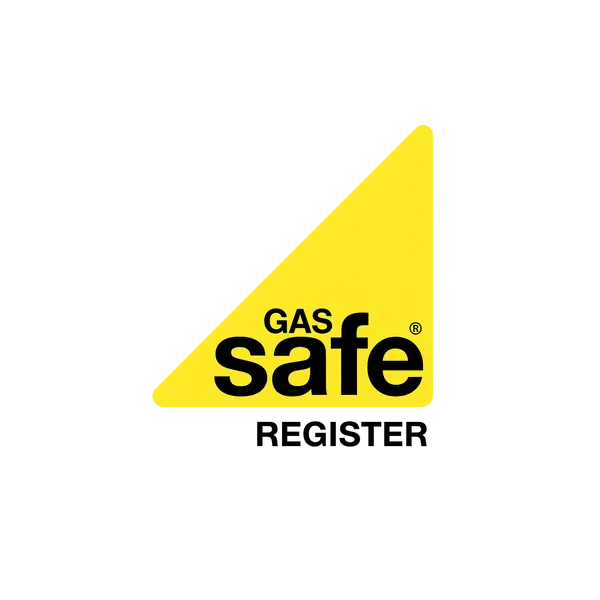What does Martin Lewis Have To Say About Solar Panels?
Martin Lewis on Solar Panels UK: Insights and Advice
What Does Martin Lewis Say About Solar Panels in 2025?
Martin Lewis, founder of MoneySavingExpert, still recommends solar panels as a smart long-term investment for many UK homeowners—provided you do your research and avoid the dodgy deals. He says the savings are significant but warns against the finance scams, especially the debt based ones.
What Does Martin Lewis Say About Solar Panels? (2025 Update)
Overall Martin Lewis does recommend solar panels for many homeowners but he has clear warnings about how you get them installed and how you pay for them.
According to Lewis, excess electricity generated by your panels can be fed back into the national grid and you get paid for this via theSmart Export Guarantee (SEG). The SEG allows you to sell surplus electricity back to the grid and get extra income. In 2025 the SEG earnings are between £150 and £800 per year depending on your system size and how much electricity you export.
Added to bill savings—now typically between £100 and £300 per year for most homes—total annual gains from having solar panels are usually between £300 and £700. The average cost to install a standard 3.5–4kW solar panel system is now around £6,500 to £7,000 with larger systems up to £12,000. Most homeowners will see a payback period of 13 to 21 years depending on usage and whether battery storage is included.
But Lewis highlights the risks, the need for occasional panel maintenance and the possibility of future changes to export rates or government incentives. He warns against companies offering “free” panels but keeping the SEG payments and those using debt based systems where the homeowner finances the installation costs through loans or complex arrangements. He also says getting DNO approval from the distribution network operator can cause delays and you can’t start benefiting from your solar system until then.
Lewis says solar panels are a long term investment and not every home is suitable. South facing, unshaded roofs are best and homes with higher daytime electricity use will benefit most. He also stresses the importance of using MCS certified installers to get a quality installation and eligibility for SEG payments and any available grants. You must verify company credentials and contracts to avoid scams and misinformation.
Solar technology is now established and reliable but Lewis recommends using online calculators to estimate savings and get several quotes before committing. He also says government grants like ECO4 and HUG2 are available for some households but eligibility is limited to those with low incomes, poor EPC ratings or in specific postcodes.
Martin Lewis recommends solar power for suitable homes but warns consumers to be careful especially when considering “free” panel offers and debt based financing. He says research thoroughly, understand it’s a long term investment and be aware of the risks and changing government support.
2025 Key Figures:
- Installation cost:£6,500–£7,000 for a standard system
- Bill savings:£100–£300
- SEG export earnings:£150–£800 per year
- Total typical annual gain:£300–£700
- Payback period:13–21 years
- Government grants:ECO4, HUG2 (limited eligibility)
- Best for:South facing, unshaded roofs; high daytime electricity use
- Cautions:Avoid “free”/lease deals, always use MCS certified installers
Installation cost:£6,500–£7,000 for a standard system
Bill savings:£100–£300
SEG export earnings:£150–£800 per year
Total typical annual gain:£300–£700
Payback period:13–21 years
Government grants:ECO4, HUG2 (limited eligibility)
Best for:South facing, unshaded roofs; high daytime electricity use
Cautions:Avoid “free”/lease deals, always use MCS certified installers
Martin Lewis’s Top Tips
Solar Panels Can Cut Bills—But Only for the Right Homes
Solar panels can save you hundreds of pounds a year on your bills, especially if you use most of your electricity during the day. The average annual savings are now typically between £100 and £300 depending on your usage and system size. Homes where people are present during the day benefit most.
Plus solar panels make homes more energy efficient, reducing overall energy consumption andincreasing property values.
Exporting Surplus Power: The Smart Export Guarantee (SEG)
The Feed-in Tariff (FIT) is now closed to new applicants. The current scheme is the Smart Export Guarantee (SEG) which pays you for surplus electricity you export to the grid. Typical SEG earnings are between £150 and £800 per year depending on your system size and how much you export. Added to bill savings total annual returns can be around £300–£700 for many households.
Upfront Costs and Payback Periods
A standard 3.5–4kW solar panel system costs around £6,500–£7,000, larger systems up to £12,000. Adding a battery costs an extra £2,000–£4,000. The payback period is now 13–21 years depending on usage, roof orientation and whether you have battery storage. You can also earn from exporting excess energy back to the grid, adding to your savings.
The government’s commitment to sustainable energy through guaranteed Feed-in Tariffs gives long term stability to solar investments.
Green energy companies play a big role in promoting solar PV installations, offering various financial incentives and support.
Make sure your home is energy efficient to get the most out of your solar panels, including bill savings and income from various tariffs.
Keep your solar panels up to date with the latest technology to maintain efficiency and maximise returns.
What about solar panel government grants?
Solar panels for homes can be accessed with new government grants such as ECO4, HUG2 and more. A standard 4kW system of 16 panels will add weight to your roof so you need to assess your roof’s strength before buying.
Make sure to check your eligibility for these grants to ensure you meet all the criteria. These can be very beneficial but the requirements to access these grants are limited. To qualify you must have a low EPC rating, low household income or be on benefits and be in specific postcodes.Click hereto find out more and see if you qualify for solar panel funding.
Warnings and Cautions
Martin Lewis warns against “free” solar panel offers or no-upfront-cost deals. These usually involve leasing your roof to a company which then takes most of the savings or SEG payments. These can complicate selling your home and may be seen as a liability by lenders. He says pay upfront if possible or use a reputable green loan with low interest – never sign up to a deal you don’t fully understand. Always use MCS certified installers to ensure quality and eligibility for SEG payments and grants.
Not Every Home Will Benefit
South facing, unshaded roofs are best. East/west facing roofs are acceptable but less efficient; north facing roofs not recommended. Your roof must be in good condition and not due for replacement soon. Households with high daytime electricity use benefit most.
Other Benefits
Solar panels reduce your carbon footprint by up to 1 tonne of CO2 per year. They may increase your property’s value and provide some insulation against future energy price rises. Battery storage can help you use more of your solar power but adds to upfront cost.
Technological Advances
Modern solar panels are more efficient and reliable than ever, systems last 25+ years and require minimal maintenance. Innovations like tracking systems and bifacial panels are increasing efficiency and output.
Martin Lewis’s Final Word
Solar can be a good investment but only if you understand the numbers and do it right. Don’t rush in – do your research, use online calculators, get multiple quotes from reputable installers and avoid dodgy financing. For the right home, solar panels can be a smart financial and environmental move but they’re not a quick win.
Make sure to verify all information including company credentials, contracts and ongoing benefits before making a decision to protect yourself from scams and misinformation.
Summary Table (2025)
Solar Panels (2025) Benefits
Introduction to Renewable Energy
Renewable energy is a big part of the UK’s move to a more sustainable future and solar panels are a key part of reducing our reliance on the grid. Solar power is clean and efficient, harnessing the sun’s energy to power your home andreduce your bills. You can save hundreds of pounds a year by installing solar panels, it’s a no brainer.
One of the main financial benefits of solar panels is theSmart Export Guarantee (SEG). This allows you to sell excess electricity back to the grid and get up to £400 a year. This not only offsets the initial cost but also gives you a steady income over the years.
Installing solar panels also gives you energy independence, reducing your need for the grid and your bills. By generating your own electricity you’re less dependent on the energy suppliers and more resilient to price fluctuations. This is especially valuable in an age of rising energy costs.
Martin Lewis, founder of the Money Saving Expert website, recommends considering solar panels as an option for homeowners looking to reduce their bills. He says do your research and choose a reputable installer to get a safe and efficient installation.
While the initial cost of solar panel installation is big, the long term benefits and the environmental impact make it a good option. Solar panels can be installed on any roof type and with a reputable installer you can get a safe and efficient installation.
The UK government is committed to renewable energy and offers variousincentives and grantsto encourage homeowners to install solar panels and reduce their energy bills. These incentives make it easier for homeowners to switch to solar and start enjoying the savings and the benefits.
In summary, solar panels are a practical and effective way to reduce your bills, increase your energy independence and contribute to a more sustainable future. With government incentives and Martin Lewis’s seal of approval, now is a good time to get solar.
Environmental and Financial Benefits
Solar panels have many benefits beyond reducing your electricity bill. Environmentally they help us get off fossil fuels which are major contributors to greenhouse gases. By harnessing the sun’s power solar panels generate clean renewable energy and reduce your carbon footprint—typically 1 tonne of CO2 per year.
Financially once your solar panel system is installed the energy it produces is free so you’ll save over time. In 2025 you’ll save between£100 and £300a year on your electricity bill. Plus theSmart Export Guarantee(SEG) and feed in tariff payments mean you can earn£150 to £800a year by selling excess back to the grid. SEG payments are the financial incentives that make solar panels a smart financial and eco friendly choice. Most households will get a total annual benefit of£300 to £700.
Long term Savings and Energy Independence
One of the biggest benefits of solar panels is long term savings and energy independence. Modern solar panels last25+ yearsgenerating electricity throughout their life and reducing your reliance on the grid. This means lower energy bills and a buffer against rising energy prices.
Withbattery storageyou can store excess solar energy during the day and use it at night or during power cuts. This means a steady supply of energy and energy independence that’s both financially and practically beneficial.
How Do Solar Panels Work?
Basic Principles and Technology
At the heart of solar panel technology is the photovoltaic (PV) process which converts sunlight into electricity. Solar panels are made up of many small photovoltaic cells, typically from silicon, a semiconducting material. When sunlight hits these cells it excites the electrons, creating an electrical current. These cells are connected together to form a panel and multiple panels make up a solar array. The DC electricity is then passed through an inverter to convert it into AC electricity—the type used in homes.
Sunlight to Electricity
The magic of solar panels is in their ability to turn sunlight into usable electricity. When sunlight hits the photovoltaic cells it energises the electrons in the silicon causing them to move and generate an electrical current. This electricity is collected by the wiring within the panel and sent to an inverter which converts it into AC electricity. This AC power can be used to run household appliances, charge batteries for later use or be exported to the grid providing a versatile and efficient way to harness solar energy.
Government Support and Incentives
The UK government continues to support solar technology through schemes like theSmart Export Guarantee (SEG), feed in tariff payments and targeted grants such asECO4andHUG2. While the SEG and fit payments compensate you for exporting surplus electricity, grants can help with the upfront cost of installation for eligible households—typically those with low incomes, poor EPC ratings or in specific postcodes. These tariffs are the financial incentives that can reduce the payback period of your solar investment.
The average cost to install a standard 3.5–4kW solar system in 2025 is£6,500–£7,000(larger systems up to £12,000). The payback period is now13 to 21 yearsdepending on your usage and whether you include battery storage.
Economic Gain Over Time
While the initial investment is big the combined savings on your electricity bill and SEG earnings can result in a big economic gain over the life of the system. For most households this means a total annual payout of£300–£700and you’ll recoup your investment and have years of free clean energy after that.
Environmental Impact
Beyond the financial benefits solar panels make homes more energy efficient by reducing carbon emissions and supporting the UK’s transition to renewable energy. By generating electricity from a renewable source homeowners are helping to mitigate climate change and a cleaner greener future. Plus making a home energy efficient withsolar panels increases property valuesso there’s a clear incentive for homeowners to adopt this technology.
Technology
Solar technology has moved fast in recent years. Modern solar panels are more efficient, reliable and durable than ever with typical warranties of 20–25 years. To make sure you’re making the best investment it’s important to stay up to date with the current value and efficiency of older solar panels and the latest technology and market trends. Battery storage systems and solar thermal panels for water heating are also more accessible so the benefits of solar are increasing.
Solar panels in 2025 offer clear environmental and economic benefits with strong government support for eligible households and improving technology. Whilethe upfront costis big the long term savings, energy independence and environmental impact make solar panels a good option for many UK households.
In summary:Solar panels are a long term investment for many UK households in 2025 as energy prices stay high and government incentives continue. Martin Lewis’s advice is clear: do your homework, avoid the dodgy deals and only go ahead if your home and finances are suitable. For the right property solar panels can save you a lot and have environmental benefits—but they’re not for everyone and the decision needs careful planning.
Contact us to arrange a free, no obligation quotationfrom our friendly team. We'll get back to you within one working day.
See Our Solar and Battery Installation Services in Action
Solar Panel Installation and FAQ’s
Getting Started with Solar Panels
Dive into the world of solar panel installation with insights into flat roof setups, possible energy savings, how it works, panel options, and more.
- Best House Solar Panels Compared
- Average Solar Panel Costs
- What Kind Of System Do I Need?
- Do I Need Planning Permission in The UK?
- Solar Panel Sizes Explained
- How Long Do Solar Panels Last?
- How Do Panels Work?
- Does Solar PV Work In Cloudy Days?
- Improving Your EPC With Solar PV
- How Much Do Solar Panels Save On Your Energy Bills?
- Solar Inverters Explained
- How much electricity does a solar panel produce?
- Is My Roof Suitable For A System?
Best House Solar Panels Compared
Average Solar Panel Costs
What Kind Of System Do I Need?
Do I Need Planning Permission in The UK?
Solar Panel Sizes Explained
How Long Do Solar Panels Last?
How Do Panels Work?
Does Solar PV Work In Cloudy Days?
Improving Your EPC With Solar PV
How Much Do Solar Panels Save On Your Energy Bills?
Solar Inverters Explained
How much electricity does a solar panel produce?
Is My Roof Suitable For A System?
Solar Panel Installation and Types
Discover how to participate in the SEG scheme and navigate planning permissions in the UK while exploring the essential concept of DNO approval for a seamless solar panel experience.
- The Process of Installation
- Flat Roof Solar Systems Explained
- In-Roof Solar Systems
- Free Solar Panel Installation With ECO4 Grant
- Solar Panels For Farm Buildings
- Solar Panels For Commercial Properties
- DNO Approval: What Is It and How Does It Work?
- Solar, Inverter, and Battery Packages
- Are Solar Roof Tiles Worth It? The Pros & Cons
The Process of Installation
Flat Roof Solar Systems Explained
In-Roof Solar Systems
Free Solar Panel Installation With ECO4 Grant
Solar Panels For Farm Buildings
Solar Panels For Commercial Properties
DNO Approval: What Is It and How Does It Work?
Solar, Inverter, and Battery Packages
Are Solar Roof Tiles Worth It? The Pros & Cons
Find the best system size for your needs ☀️
Reliable Solar & Battery Services for Your Home
With CRG, you can be sure you’re getting the best results at a cost-effective price. Our highly-rated commercial solar installation services include the following:
- Home Solar Installation
- Flat Roof Solar
- Commercial Solar Installation
- Ground Mounted Solar Panels
- Slate Roof Solar
- In Roof or Integrated Panels
- Metal Roof Solar System Installation
- Farm Building/ Farm House Solar
Home Solar Installation
Flat Roof Solar
Commercial Solar Installation
Ground Mounted Solar Panels
Slate Roof Solar
In Roof or Integrated Panels
Metal Roof Solar System Installation
Farm Building/ Farm House Solar
Learn more about how our experienced solar energy professionals can help you — simplyrequest a free quoteonline or call us on0333 253 3531today.
Read ourgreat reviews.
From quote to after care we found CRG professional… From start to finish we found CRG helpful, professional and the workmanship excellent.
IAIN - CRG SOLAR CUSTOMER















